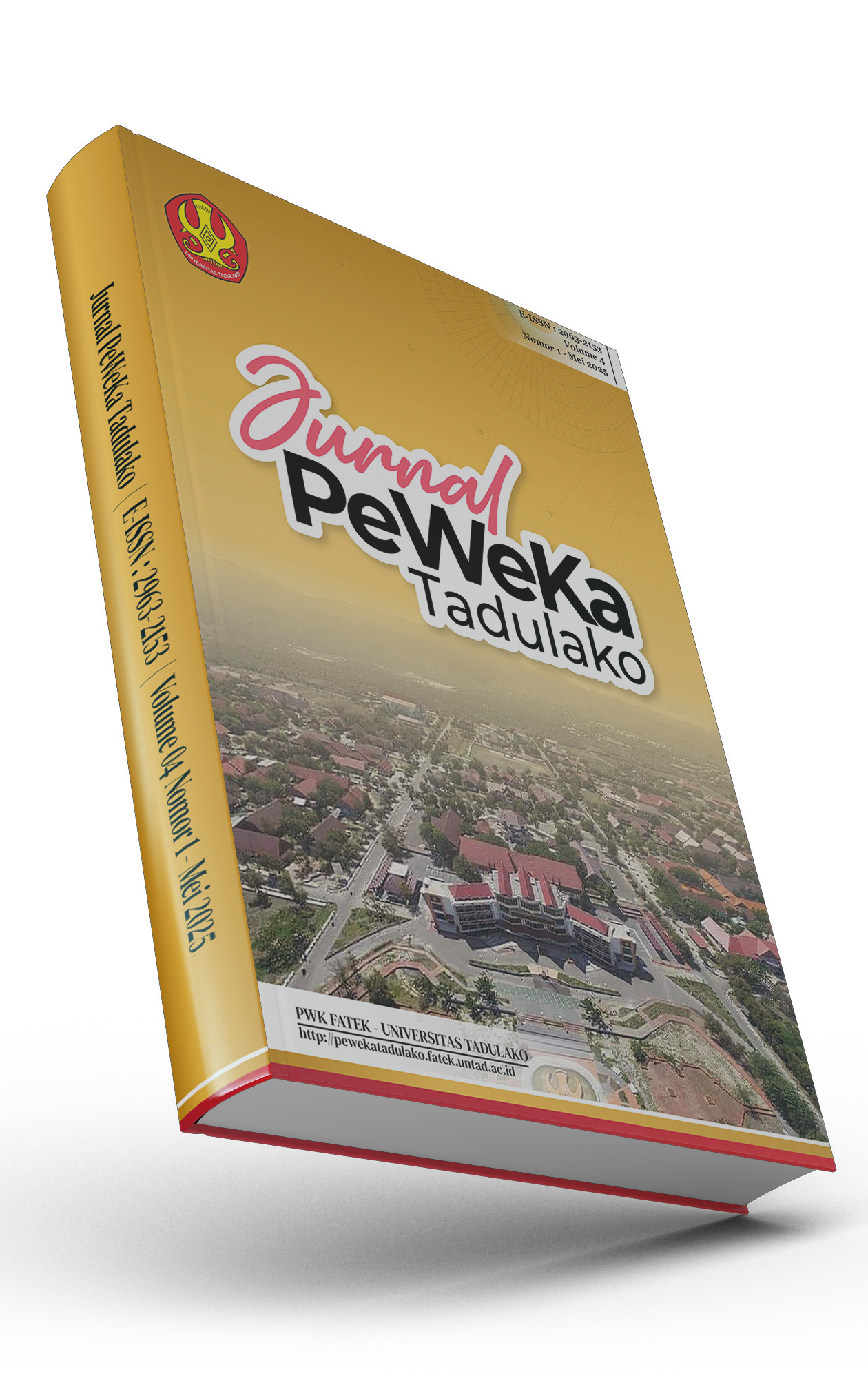Perencanaan Struktur dan Pola Ruang Kawasan Pemerintahan Tobadak berbasis Konsep Urban Resilience
DOI:
https://doi.org/10.22487/peweka.v4i1.52Keywords:
Government area, Space Syntax, Urban Resilience, Sustainable, Integrated DevelopmentAbstract
Central Mamuju Regency is currently aggressively carrying out sustainable regional development. The development aims at equitable distribution in the economic, social and environmental fields. As with developments in developing regions, the very rapid penetration of development always creates an urban paradox which in this case triggers a process of urbanization of the population from rural areas to cities. This planning aims to create a space capable of meeting and controlling the needs of the Tobadak Government Area both economically, socially and environmentally. The analysis techniques used include: SWOT analysis, AHP analysis, Spatial analysis and Space Syntax analysis. The data used are primary and secondary data obtained from government agencies as well as observation, documentation and interviews. The main results of this planning are the master plan, spatial structure and pattern planning as well as regional disaster mitigation based on the concept of sustainable and integrated development.
References
Brugmann, J. (2012). Financing the resilient city. Environment and Urbanization, 24(1), 215–232. https://doi.org/10.1177/0956247812437130
Brunetta, G., & Baglione, V. (2013). Resilience in the Transition Towns Movement: Towards a new urban governance. Journal of Land Use, Mobility and Environment, 6, 251–264. https://doi.org/10.6092/1970-9870/1524
Brunetta, G., & Caldarice, O. (2018). Putting resilience into practice: The spatial planning response to urban risks. In G. L. Choguill (Ed.), Resilient cities (pp. 39–55). Springer. https://doi.org/10.1007/978-3-319-76944-8_3
Coaffee, J., & O’Hare, P. (2008a). Urban resilience: Towards a framework for planning for climate change. International Journal of Urban Sustainable Development, 1(1), 85–108. https://doi.org/10.1080/19463130802653239
Coaffee, J., & O’Hare, P. (2008b). Urban resilience and national security: The role for planning. Proceedings of the Institution of Civil Engineers - Urban Design and Planning, 161(4), 173–182. https://doi.org/10.1680/udap.2008.161.4.173
Ernstson, H. (2013). The social production of ecosystem services: A framework for studying environmental justice and ecological complexity in urbanized landscapes. Landscape and Urban Planning, 109(1), 7–17. https://doi.org/10.1016/j.landurbplan.2012.10.005
Godschalk, D. R. (2003). Urban hazard mitigation: Creating resilient cities. Natural Hazards Review, 4(3), 136–143. https://doi.org/10.1061/(ASCE)1527-6988(2003)4:3(136)
Hillier, B., & Hanson, J. (1984). The social logic of space. Cambridge University Press.
Hillier, B., Penn, A., Hanson, J., Grajewski, T., & Xu, J. (1993). Natural movement: Or, configuration and attraction in urban pedestrian movement. Environment and Planning B: Planning and Design, 20(1), 29–66. https://doi.org/10.1068/b200029
Jayawardena, H., Van Roon, M., & Knight-Lenihan, S. (2014). Resilience planning: An innovative approach in dealing with urban vulnerabilities and adaptation to prioritise opportunities for uncertain urban futures. Proceedings of the World Sustainable Building Conference SB14, Barcelona.
Lu, P.-W. (2014). Spatial planning and urban resilience in the context of flood risk: A comparative study of Kaohsiung, Tainan and Rotterdam [Doctoral dissertation, Delft University of Technology]. Architecture and the Built Environment.
Mehmood, A. (2016). Of resilient places: Planning for urban resilience. European Planning Studies, 24(2), 407–419. https://doi.org/10.1080/09654313.2015.1082980
Magoni, M. (2017). Resilience thinking and urban metabolism in spatial planning: Which possible integrations. City Territory and Architecture, 4(1), 1–8. https://doi.org/10.1186/s40410-017-0066-6
Ribeiro, P. J. G., & Gonçalves, L. A. P. J. (2019). Urban resilience: A conceptual framework. Sustainable Cities and Society, 50. https://doi.org/10.1016/j.scs.2019.101625
Teklenburg, J. A., van Nes, A., & Rofaiel, M. (1993). Measures of centrality and safety in urban space. In Proceedings of the Third International Space Syntax Symposium (pp. 1–15). Georgia Institute of Technology.
United Nations Office for Disaster Risk Reduction (UNDRR). (2015). Sendai Framework for Disaster Risk Reduction 2015–2030. https://www.preventionweb.net/files/43291_sendaiframeworkfordrren.pdf.
Downloads
Published
How to Cite
Issue
Section
License
Copyright (c) 2025 Muhammad Irfan, Sri Wahyuni, Iqbal Kamaruddin

This work is licensed under a Creative Commons Attribution-ShareAlike 4.0 International License.







